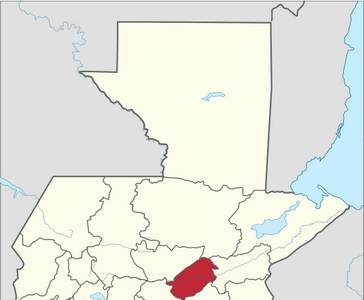|
 In Guatemala, divided into 22 administrative units - departments, 23 ethnic groups live, each of which has its own language, national costume, folklore and gastronomic customs. The Guatemalan Institute of Tourism has developed a culinary map that takes into account the geographical location of the departments, their climatic characteristics and the religious and cultural traditions of the indigenous peoples. According to this map, the country is divided into seven tourist systems, and Progreso is included in the sixth of them together with the regions of Sakapa, Chikimula, Hutiapa and Xalapa. In Guatemala, divided into 22 administrative units - departments, 23 ethnic groups live, each of which has its own language, national costume, folklore and gastronomic customs. The Guatemalan Institute of Tourism has developed a culinary map that takes into account the geographical location of the departments, their climatic characteristics and the religious and cultural traditions of the indigenous peoples. According to this map, the country is divided into seven tourist systems, and Progreso is included in the sixth of them together with the regions of Sakapa, Chikimula, Hutiapa and Xalapa.
The department is located mainly in arid and scarce land, where small quantities of coffee, sugarcane, corn, legumes, annatto, cocoa, tomatoes and fruits are grown. These agricultural products, as well as pork and poultry, characterize the base of the regional cuisine, to which is complemented by the use of giant yucca flowers and wild vine buds, called loroco, as aromatic spices. Typical dishes in this category are:
• tamal with yucca flowers (tamal de flor de izote) - a steamed culinary product in the form of a banana leaf envelope wrapped in a filling consisting of pieces of pork, tomato and physalis, green chili and chipotle, onions, flowers and corn flour;
• envueltos - yucca inflorescences, fried in egg batter and served with tomato, pepper, onion and garlic sauce in chicken broth;
• iguashte - stew with lots of yucca flowers, tomatoes, onions, garlic, beans and green beans, to which are added ground fried squash seeds;
 • dobladas de loroco - large unleavened tortillas made from corn flour and water dough with fresh soft cheese, chopped grape buds, pork rinds and onions; • dobladas de loroco - large unleavened tortillas made from corn flour and water dough with fresh soft cheese, chopped grape buds, pork rinds and onions;
• chuchitos de loroco - culinary products boiled in boiling water, shaped like a bag of corn leaves and filled with a mass of corn flour, cream, loroko and lard.
Most of Progreso's meat dishes are made with chicken and pork, and the most emblematic is estofado de gallina - a stew with pieces of poultry, potatoes, peas, seedless tomatoes, carrots, onions, garlic and raisins. After a short frying, the ingredients are stewed in white wine and chicken broth, which gives it a special taste. Estofado is served with white rice. In addition to it, iconic dishes include:
• pollo en crema – chicken breaststewed in cream broth with garlic, tomatoes, coriander, onions, peppers and lorocco;
• rice with pork ribs (arroz con costilla) - a special stew for which the pieces ribs first they are fried in oil with vinegar, bay leaves and thyme, then tomatoes, onions, garlic, cloves, soaked French bread and rice are added to them.
Cocoa, rice, annatto, cinnamon and sugar are the main components of traditional refreshing drink tiste, especially popular during Easter and All Saints' Day. To prepare it, all the ingredients are ground in a clay mortar to a powdery consistency, after which water with ice or milk is added.
During festive events, women of the region sell teaste in tourist centers, cemeteries and parks, as well as pinol, a non-alcoholic refreshing drink made from roasted corn flour.
Elena
|
 In Guatemala, divided into 22 administrative units - departments, 23 ethnic groups live, each of which has its own language, national costume, folklore and gastronomic customs. The Guatemalan Institute of Tourism has developed a culinary map that takes into account the geographical location of the departments, their climatic characteristics and the religious and cultural traditions of the indigenous peoples. According to this map, the country is divided into seven tourist systems, and Progreso is included in the sixth of them together with the regions of Sakapa, Chikimula, Hutiapa and Xalapa.
In Guatemala, divided into 22 administrative units - departments, 23 ethnic groups live, each of which has its own language, national costume, folklore and gastronomic customs. The Guatemalan Institute of Tourism has developed a culinary map that takes into account the geographical location of the departments, their climatic characteristics and the religious and cultural traditions of the indigenous peoples. According to this map, the country is divided into seven tourist systems, and Progreso is included in the sixth of them together with the regions of Sakapa, Chikimula, Hutiapa and Xalapa.





